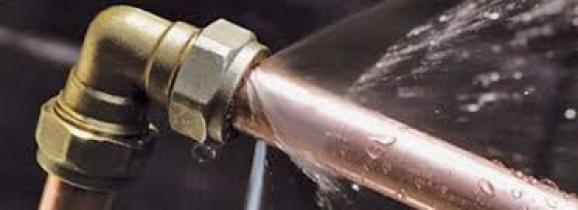Pinpoint Why Water Seepage in The House
Pinpoint Why Water Seepage in The House
Blog Article
We have encountered this post about Common Water Leaks In House below on the web and felt it made perfect sense to relate it with you here.

Leaks not only cause waste of water yet can also create unnecessary damages to your house and also advertise unwanted natural development. Unfortunately, water leakages might go undetected considering that a lot of the pipework in our house is concealed. By looking as well as recognizing for day-to-day scenarios that cause leaks, you can shield your home from future leaks and also unnecessary damages. Today, we will certainly look at 6 leak creates that might be triggering your pipelines to leak.
Instantaneous temperature modifications.
Extreme temperature changes in our pipelines can create them to increase and also get all of a sudden. This expansion as well as contraction may cause splits in the pipelines, particularly if the temperature are below freezing. If you kept an eye on just how your plumbing functions, it would be best. The existence of the previously stated conditions regularly suggests a high danger.
Rusty water systems
As time passes by, your plumbing system ages as well as deterioration such as corrosion might begin eating away the pipelines. This might be the root cause of staining or warping on your pipes. This requires an assessment with your plumber quickly. Take into consideration changing the pipelines considering that they are at a higher threat of corrosion than the more recent models if our plumbing system is old.
Faulty Pipe Joints
Pipe joints can degrade over time, resulting in water leaks. If you have noisy pipes that make ticking or banging sounds, particularly when the hot water is turned on, your pipe joints are most likely under a lot of stress.
Elbowing in roots
Most water leaks start outside your house rather than inside it. If you observe an abrupt decline in water stress, claim in your tap, take some time to head out and also analyze your backyard. You might notice damp patches or sinkholes in your backyard, and that could indicate that tree origins are getting into water lines triggering water to seep out. You can have your plumber check for breach, particularly if you have trees or shrubs near your residential property.
Poor Water Connectors
At times, a leak can be caused by loosened tubes and pipelines that provide your home appliances. In instance of a water connections leak, you might notice water running straight from the supply line or puddles around your devices.
Clogged Drains
Clogged drains might be irritating and also inconveniencing, however they can in some cases wind up causing an overflow causing burst pipelines. Keep removing any kind of materials that might go down your drains that might block them to prevent such aggravations.
All the above are causes of leakages but not all water leaks result from plumbing leaks; some leaks might come from roofing system leaks. All leaks should be fixed instantly to prevent water damages.
Leakages not only trigger waste of water but can also create unneeded damage to your home and advertise unwanted organic development. By looking and recognizing for daily scenarios that trigger leakages, you can secure your home from future leakages and unnecessary damages. Today, we will look at 6 leakage triggers that might be causing your pipes to trickle.
At times, a leak can be triggered by loosened hoses and also pipes that provide your home appliances. In case of a water connections leakage, you may notice water running directly from the supply line or pools around your home appliances.
How To Check For Water Leak In Your Home
How To Check for Leaks
The average household's leaks can account for nearly 10,000 gallons of water wasted every year and ten percent of homes have leaks that waste 90 gallons or more per day. Common types of leaks found in the home are worn toilet flappers, dripping faucets, and other leaking valves. These types of leaks are often easy to fix, requiring only a few tools and hardware that can pay for themselves in water savings. Fixing easily corrected household water leaks can save homeowners about 10 percent on their water bills.
To check for leaks in your home, you first need to determine whether you're wasting water and then identify the source of the leak. Here are some tips for finding leaks:
Take a look at your water usage during a colder month, such as January or February. If a family of four exceeds 12,000 gallons per month, there are serious leaks.
Check your water meter before and after a two-hour period when no water is being used. If the meter changes at all, you probably have a leak.
Identify toilet leaks by placing a drop of food coloring in the toilet tank. If any color shows up in the bowl after 10 minutes, you have a leak. (Be sure to flush immediately after the experiment to avoid staining the tank.)
Examine faucet gaskets and pipe fittings for any water on the outside of the pipe to check for surface leaks.
Undetected water leaks can happen without the home or business owner even realizing. If you suspect a water leak, but not able to find the source. It is time to contact a professional water leak detection service, The Leak Doctor.
How To Find a Water Leak In Your Home
https://www.leakdoctor.com/blog/How-To-Check-For-Water-Leak-In-Your-Home_AE197.html

Do you enjoy reading about Top Causes of Home Water Leaks? Put a comment further down. We will be delighted to hear your ideas about this blog post. We hope to see you back again later on. Sharing is good. You never know, you could be helping someone out. Thank you for going through it.
Contact for quality! Report this page